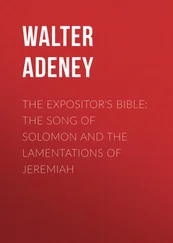Charles Addison - The History of the Knights Templars, the Temple Church, and the Temple
Здесь есть возможность читать онлайн «Charles Addison - The History of the Knights Templars, the Temple Church, and the Temple» — ознакомительный отрывок электронной книги совершенно бесплатно, а после прочтения отрывка купить полную версию. В некоторых случаях можно слушать аудио, скачать через торрент в формате fb2 и присутствует краткое содержание. Жанр: foreign_antique, foreign_prose, на английском языке. Описание произведения, (предисловие) а так же отзывы посетителей доступны на портале библиотеки ЛибКат.
- Название:The History of the Knights Templars, the Temple Church, and the Temple
- Автор:
- Жанр:
- Год:неизвестен
- ISBN:нет данных
- Рейтинг книги:5 / 5. Голосов: 1
-
Избранное:Добавить в избранное
- Отзывы:
-
Ваша оценка:
- 100
- 1
- 2
- 3
- 4
- 5
The History of the Knights Templars, the Temple Church, and the Temple: краткое содержание, описание и аннотация
Предлагаем к чтению аннотацию, описание, краткое содержание или предисловие (зависит от того, что написал сам автор книги «The History of the Knights Templars, the Temple Church, and the Temple»). Если вы не нашли необходимую информацию о книге — напишите в комментариях, мы постараемся отыскать её.
The History of the Knights Templars, the Temple Church, and the Temple — читать онлайн ознакомительный отрывок
Ниже представлен текст книги, разбитый по страницам. Система сохранения места последней прочитанной страницы, позволяет с удобством читать онлайн бесплатно книгу «The History of the Knights Templars, the Temple Church, and the Temple», без необходимости каждый раз заново искать на чём Вы остановились. Поставьте закладку, и сможете в любой момент перейти на страницу, на которой закончили чтение.
Интервал:
Закладка:
After the miserable failure of the second crusade, 43 43 Geoffrey of Clairvaux observes, however, that the second crusade could hardly be called unfortunate , since, though it did not at all help the Holy Land, it served to people heaven with martyrs .
brother Everard des Barres, the Master of the Temple, returned to Paris, with his friend and patron Louis, the French king; and the Templars, deprived of their chief, were now left alone and unaided to withstand the victorious career of the fanatical Mussulmen. Their miserable situation is thus portrayed in a melancholy letter from the treasurer of the order, written to the Master, Everard des Barres, during his sojourn at the court of the king of France.
“Since we have been deprived of your beloved presence, we have had the misfortune to lose in battle the prince of Antioch 44 44 His head and right hand were cut off by Noureddin, and sent to the caliph at Bagdad. — Abulfarag. Chron. Syr. p. 336.
and all his nobility. To this catastrophe has succeeded another. The infidels invaded the territory of Antioch; they drove all before them, and threw garrisons into several strong places. On the first intelligence of this disaster, our brethren assembled in arms, and in concert with the king of Jerusalem went to the succour of the desolated province. We could only get together for this expedition one hundred and twenty knights and one thousand serving brothers and hired soldiers, for whose equipment we expended seven thousand crowns at Acre, and one thousand at Jerusalem. Your paternity knows on what condition we assented to your departure, and our extreme want of money, of cavalry, and of infantry. We earnestly implore you to rejoin us as soon as possible, with all the necessary succours for the Eastern Church, our common mother.
“… Scarce had we arrived in the neighbourhood of Antioch, ere we were hemmed in by the Turcomans on the one side, and the sultan of Aleppo (Noureddin) on the other, who blockade us in the environs of the town, whilst our vineyards are destroyed, and our harvests laid waste. Overwhelmed with grief at the pitiable condition to which we are reduced, we conjure you to abandon everything, and embark without delay. Never was your presence more necessary to your brethren; – at no conjuncture could your return be more agreeable to God… The greater part of those whom we led to the succour of Antioch are dead…
“We conjure you to bring with you from beyond sea all our knights and serving brothers capable of bearing arms. Perchance, alas! with all your diligence, you may not find one of us alive. Use, therefore, all imaginable celerity; pray forget not the necessities of our house: they are such that no tongue can express them. It is also of the last importance to announce to the Pope, to the King of France, and to all the princes and prelates of Europe, the approaching desolation of the Holy Land, to the intent that they succour us in person, or send us subsidies. Whatever obstacles may be opposed to your departure, we trust to your zeal to surmount them, for now hath arrived the time for perfectly accomplishing our vows in sacrificing ourselves for our brethren, for the defence of the eastern church, and the holy sepulchre…
“For you, our dear brothers in Europe, whom the same engagements and the same vows ought to make keenly alive to our misfortunes, join yourselves to our chief, enter into his views, second his designs, fail not to sell everything; come to the rescue; it is from you we await liberty and life!” 45 45 Spicilegii Dacheriani , tom. ii. p. 511; see also Will. Tyr. lib. xvii. cap. 9.
On the receipt of this letter, the Master of the Temple, instead of proceeding to Palestine, abdicated his authority, and entered into the monastery of Clairvaux, where he devoted the remainder of his days to the most rigorous penance and mortification.
Bernard de
Tremelay.
A. D. 1151.
A. D. 1152.
He was succeeded (A. D. 1151) by Bernard de Tremelay, a nobleman of an illustrious family in Burgundy, in France, and a valiant and experienced soldier. 46 46 Will. Tyr. lib. xvii. cap. 21. L’art de verifier les dates , p. 340. Nobiliaire de Franche-Compté , par Dunod, p. 140.
The infidels made continual incursions into the christian territories, and shortly after his accession to power they crossed the Jordan, and advanced within sight of Jerusalem. Their yellow and green banners waved on the summit of the Mount of Olives, and the warlike sound of their kettle-drums and trumpets was heard within the sacred precincts of the holy city. They encamped on the mount over against the Temple; and had the satisfaction of regarding from a distance the Beit Allah , or Temple of the Lord, their holy house of prayer. In a night attack, however, they were defeated with terrible slaughter, and were pursued all the way to the Jordan, five thousand of their number being left dead on the plain. 47 47 Will. Tyr. lib. xvii. cap. 20, ad ann. 1152.
Shortly after this affair the Templars lost their great patron, Saint Bernard, who died on the 20th of April, A. D. 1153, in the sixty-third year of his age. On his deathbed he wrote three letters in behalf of the order. The first was addressed to the patriarch of Antioch, exhorting him to protect and encourage the Templars, a thing which the holy abbot assures him will prove most acceptable to God and man. The second was written to Melesinda, queen of Jerusalem, praising her majesty for the favour shown by her to the brethren of the order; and the third, addressed to Brother André de Montbard, a Knight Templar, conveys the affectionate salutations of St. Bernard to the Master and brethren, to whose prayers he recommends himself. 48 48 S. Bernardi epistolæ , 288, 289, 392, ed. Mabillon.
The same year, at the siege of Ascalon, the Master of the Temple and his knights attempted alone and unaided to take that important city by storm. At the dawn of day they rushed through a breach made in the walls, and penetrated to the centre of the town. There they were surrounded by the infidels and overpowered, and, according to the testimony of an eye-witness, who was in the campaign from its commencement to its close, not a single Templar escaped: they were slain to a man, and the dead bodies of the Master and his ill-fated knights were exposed in triumph from the walls. 49 49 Anselmi Gemblacensis Chron. ad ann. 1153. Will. Tyr. lib. xvii. cap. 27.
Bertrand
de
Blanquefort.
A. D. 1154.
A. D. 1156.
De Tremelay was succeeded (A. D. 1154) by Brother Bertrand de Blanquefort, a knight of a noble family of Guienne, called by William of Tyre a pious and God-fearing man.
The Templars continued to be the foremost in every encounter with the Mussulmen, and the Monkish writers exult in the number of infidels they sent to hell . A proportionate number of the fraternity must at the same time have ascended to heaven , for the slaughter amongst them was terrific. On Tuesday, June 19, A. D. 1156, they were drawn into an ambuscade whilst marching with Baldwin, king of Jerusalem, near Tiberias, three hundred of the brethren were slain on the field of battle, and eighty-seven fell into the hands of the enemy, among whom was Bertrand de Blanquefort himself, and Brother Odo, marshal of the kingdom. 50 50 Captus est inter cæteros ibi Bertrandus de Blanquefort, Magister Militiæ Templi, vir religiosus ac timens Deum. Will. Tyr. lib. xviii. cap. 14. Registr. epist. apud Martene vet. script. tom. ii. col. 647.
Shortly afterwards, thirty Knights Templars put to flight, slaughtered, and captured, two hundred infidels; 51 51 Milites Templi circa triginta, ducentos Paganorum euntes ad nuphas verterent in fugam, et divino præsidio comitante, omnes partim ceperunt, partim gladio trucidarunt. Registr. epist. ut sup. col. 647.
and in a night attack on the camp of Noureddin, they compelled that famous chieftain to fly, without arms and half-naked, from the field of battle. In this last affair the names of Robert Mansel, an Englishman, and Gilbert de Lacy, preceptor of the Temple of Tripoli, are honourably mentioned. 52 52 Will. Tyr. lib. xix. cap. 8.
The services of the Templars were gratefully acknowledged in Europe, and the Pope, in a letter written in their behalf to the Archbishop of Rheims, his legate in France, characterizes them as “New Maccabees, far famed and most valiant champions of the Lord.” “The assistance,” says the Pope, “rendered by those holy warriors to all Christendom, their zeal and valour, and untiring exertions in defending from the persecution and subtilty of the filthy Pagans, those sacred places which have been enlightened by the corporal presence of our Saviour, we doubt not have been spread abroad throughout the world, and are known, not only to the neighbouring nations, but to all those who dwell at the remotest corners of the earth.” The holy pontiff exhorts the archbishop to procure for them all the succour possible, both in men and horses, and to exert himself in their favour among all his suffragan bishops. 53 53 Epist. xvi. S. Remensi archiepiscopo et ejus suffraganeis pro ecclesia Jerosolymitana et militibus Templi, apud Martene vet. script. tom. ii. col. 647.
Интервал:
Закладка:
Похожие книги на «The History of the Knights Templars, the Temple Church, and the Temple»
Представляем Вашему вниманию похожие книги на «The History of the Knights Templars, the Temple Church, and the Temple» списком для выбора. Мы отобрали схожую по названию и смыслу литературу в надежде предоставить читателям больше вариантов отыскать новые, интересные, ещё непрочитанные произведения.
Обсуждение, отзывы о книге «The History of the Knights Templars, the Temple Church, and the Temple» и просто собственные мнения читателей. Оставьте ваши комментарии, напишите, что Вы думаете о произведении, его смысле или главных героях. Укажите что конкретно понравилось, а что нет, и почему Вы так считаете.












